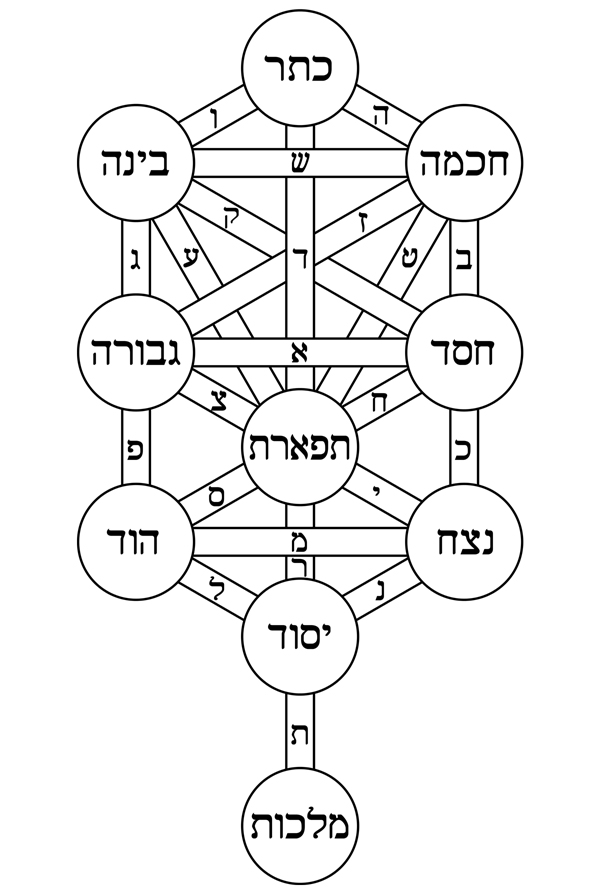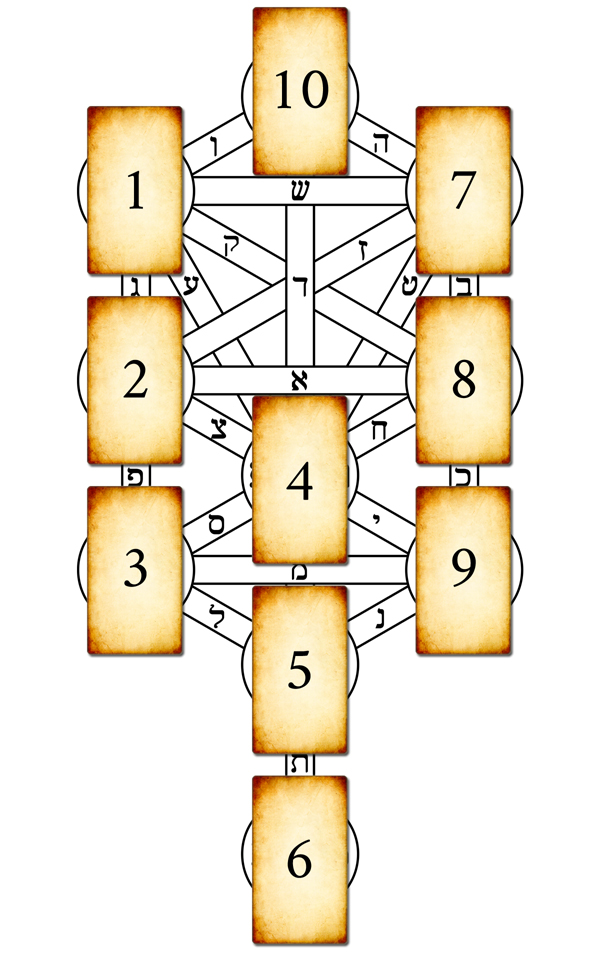How to read the Tarot with the Kabbalah Tree method
Inspiration behind this method
 This reading method is inspired by the Tree of Life, which is the basis of the Kabbalah.
This reading method is inspired by the Tree of Life, which is the basis of the Kabbalah.
The Kabbalah is the collection of mystical and esoteric teachings originating in Judaism, handed down to the chosen ones from master to disciple, and which have remained almost fully intact thanks to their initiatory character and the fact that they were kept secret from the profane.
The tree of life of the Kabbalah is the symbolic summary of the creation of the universe, and the laws that govern it to the present day.
This tree is composed of 10 Sephirot, the instruments of God, which we can find in the world around us. They are the instruments used by God in the creation, and they are also the characteristics of the world that was generated in this manner. But we can also find them referring to the emotional side of an individual, or within a given situation.
In short, the Sephirot are 10 general principles, which we can discern in the confusion of our life, and which allow us to impose order upon it and give it meaning, to interpret it in the correct way.
It is therefore easy to see how the Tree of Life of the Kabbalah fits perfectly with the Tarot, since it shares the objective of reading the situation we are going through. For this reason, the earliest esotericists were already starting to use the Tree of Life for reading the Tarot.
Suggestions for use
Because of its complexity and its almost infinite possibilities for deeper exploration, this Tarot reading method is recommended for expert readers.
However, it should in no way be seen as a practice that is off-limits for learners: you can try it out, and gradually improve by increasing your skills and knowledge.
For example, in the tree of life there are 22 paths, just as there are 22 Major Arcana cards in the Tarot. So it is obvious that exploring just this aspect requires a certain range of knowledge. However, there is nothing stopping you from overlooking it for the initial readings.
How to begin
I recommend using the full deck of Tarot cards, including the Minor Arcana (although there is nothing stopping you from doing otherwise).
The reader shuffles the cards, hands the deck to the querent, and asks him/her to cut it.
Once the deck has been reassembled, the reader starts to turn over the cards on the table. In doing this, they will start by laying out the cards in columns of three cards, from left to right. These represent the pillars of the Tree of Life.

They will place cards 1 to 3 (pillar of severity) on the table, turning them over as they do so.
They will place cards 4 to 6 (pillar of consciousness) on the table, leaving them face down.
They will place cards 7 to 9 (pillar of mercy) on the table, turning them over as they do so.
They will lay card 10 (the crown) on the table, turning it over.
After observing the cards that have come out, they will then turn over the 3 cards of the central pillar.
Meaning of the cards depending on their position
- Card 1 – Binàh (intelligence, understanding). This is the means by which we can achieve what we are interested in. It is also the intelligence necessary for understanding and metabolizing the situation.
- Card 2 – Gevuràh (severity, justice, power). This is a very important card. Underlying it is the realization that without intervention a situation tends to remain the same. Tension between preserving one’s identity and seeking change. The “heavenly surgeon” cuts out and discards what is necessary.
- Card 3 – Hod (eternity, honor, glory). How to implement what has now been understood. How to connect what emerged in the other more abstract positions with reality, how to make it operable.
- Card 4 – Tif’eret (beauty). The innermost feelings of the querent, his/her purest desires. Becoming aware of one’s own desires, and acceptance of their condition of imperfection (by accepting imperfection, does it not become “perfect” too?).
- Card 5 – Yesod (foundation). Awareness that our perceptions and feelings are not objective. There is nothing negative in this. It is simply the last step in the work on ourselves, so that we can move on to material realization (moving things in the direction we want them to go).
- Card 6 – Malkhut (kingdom). Reality. What it currently is, and how it works (including the parts that we may not like, and on which we have no possibility to intervene because they are not under our control).
- Card 7 – Hokhmah (wisdom). The idea, the beginning of everything. The primordial impulse that gives you the desire to act, to accomplish.
- Card 8 – Hesed (mercy, forgiveness). You, your character. Your values, your philosophy of life, and how they impact the rest of the reading.
- Card 9 – Netzah (triumph, victory). Emotions and passions. These are the impulses, feelings, energies that move us. It is the burning storm within us. It is the feeling of love.
- Card 10 – Keter (crown). From where the things we desire will come. The breath of life that will make us happy, unfolding the rest of the reading as if the other cards were the petals of a flower.
Further reading
If you are still not perfectly comfortable with the meaning of the Tarot cards, here is my summary guide to Tarot card meanings.
You can find other articles like this in the section:
“Learning Tarot reading methods”
